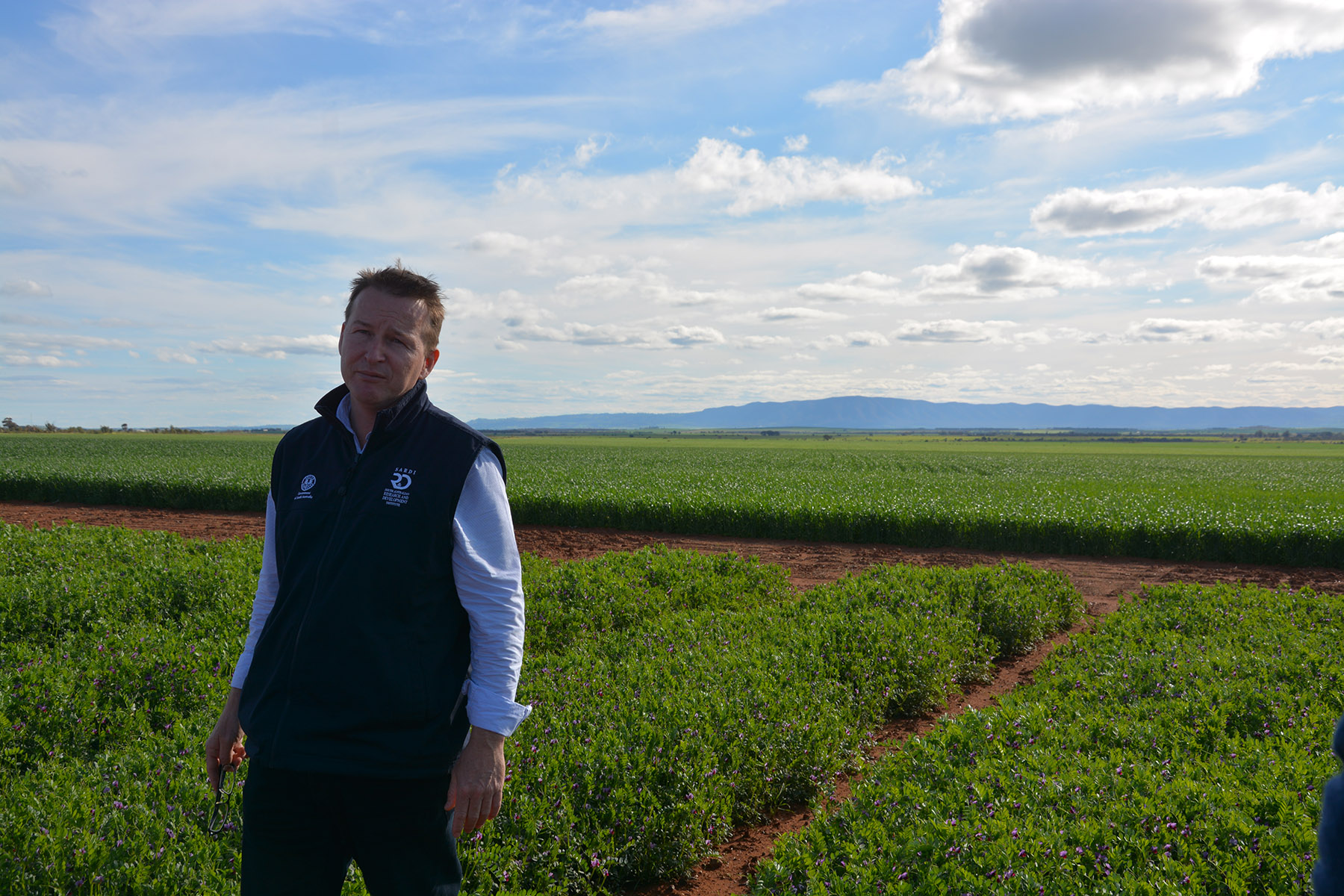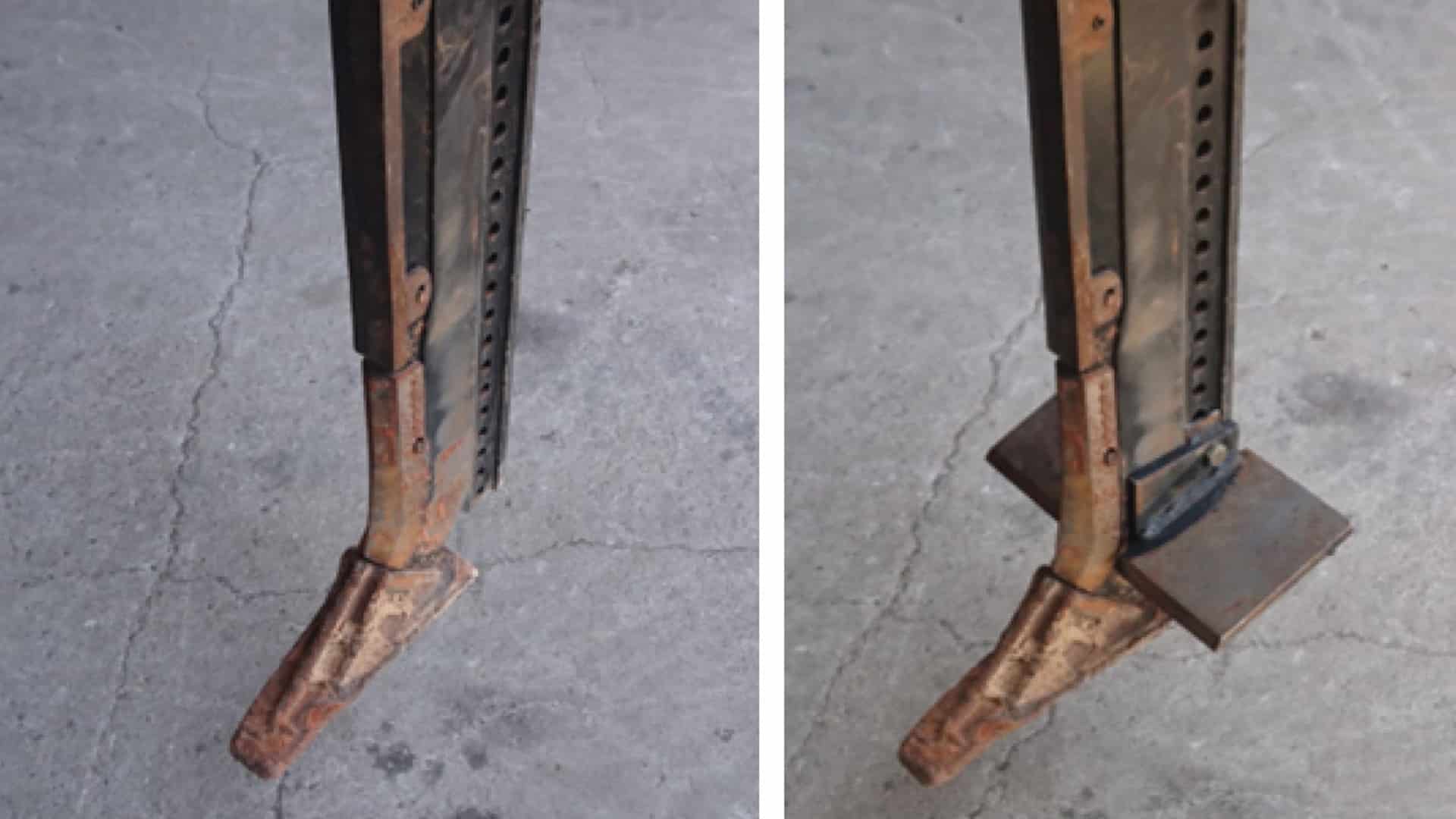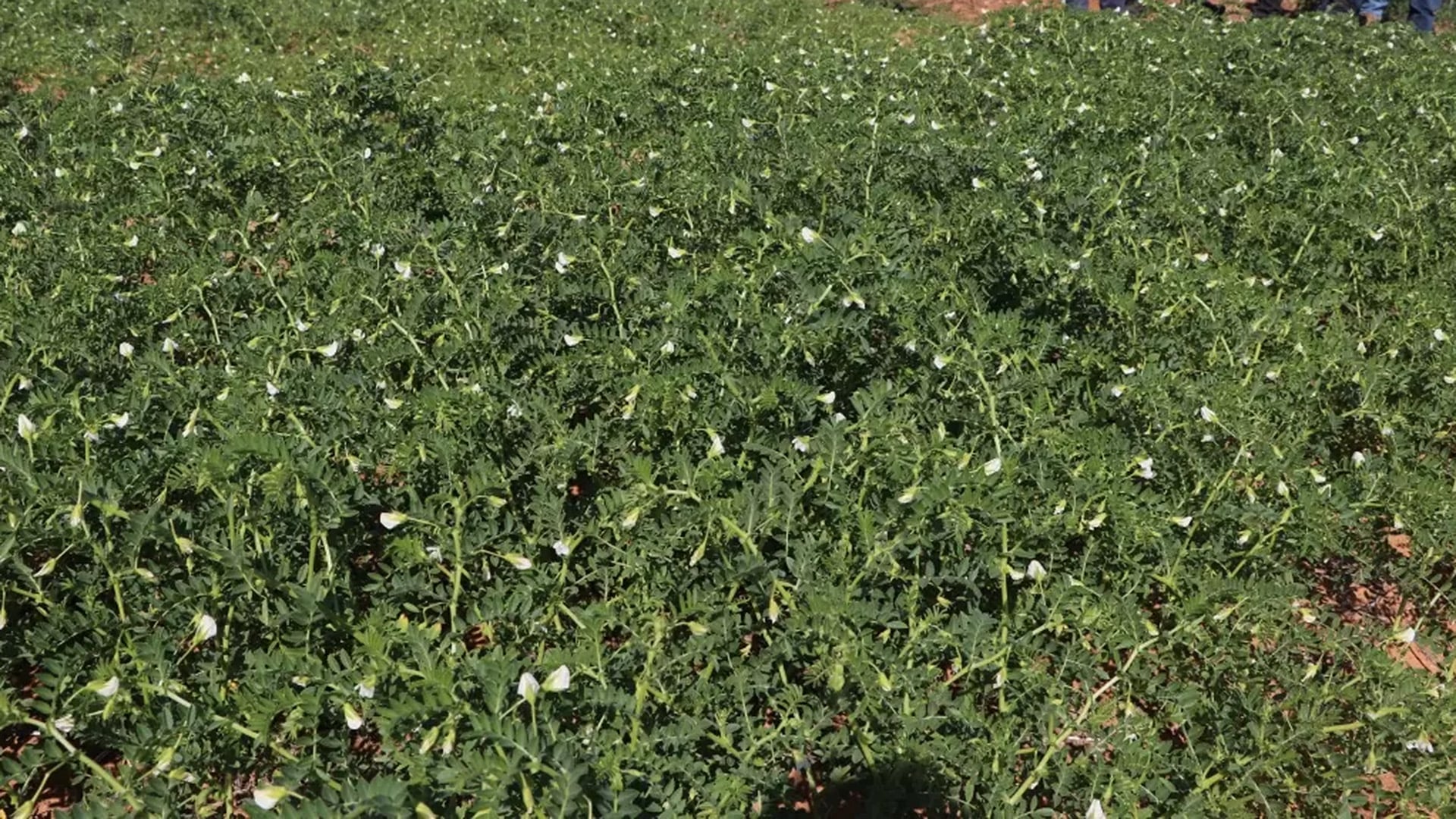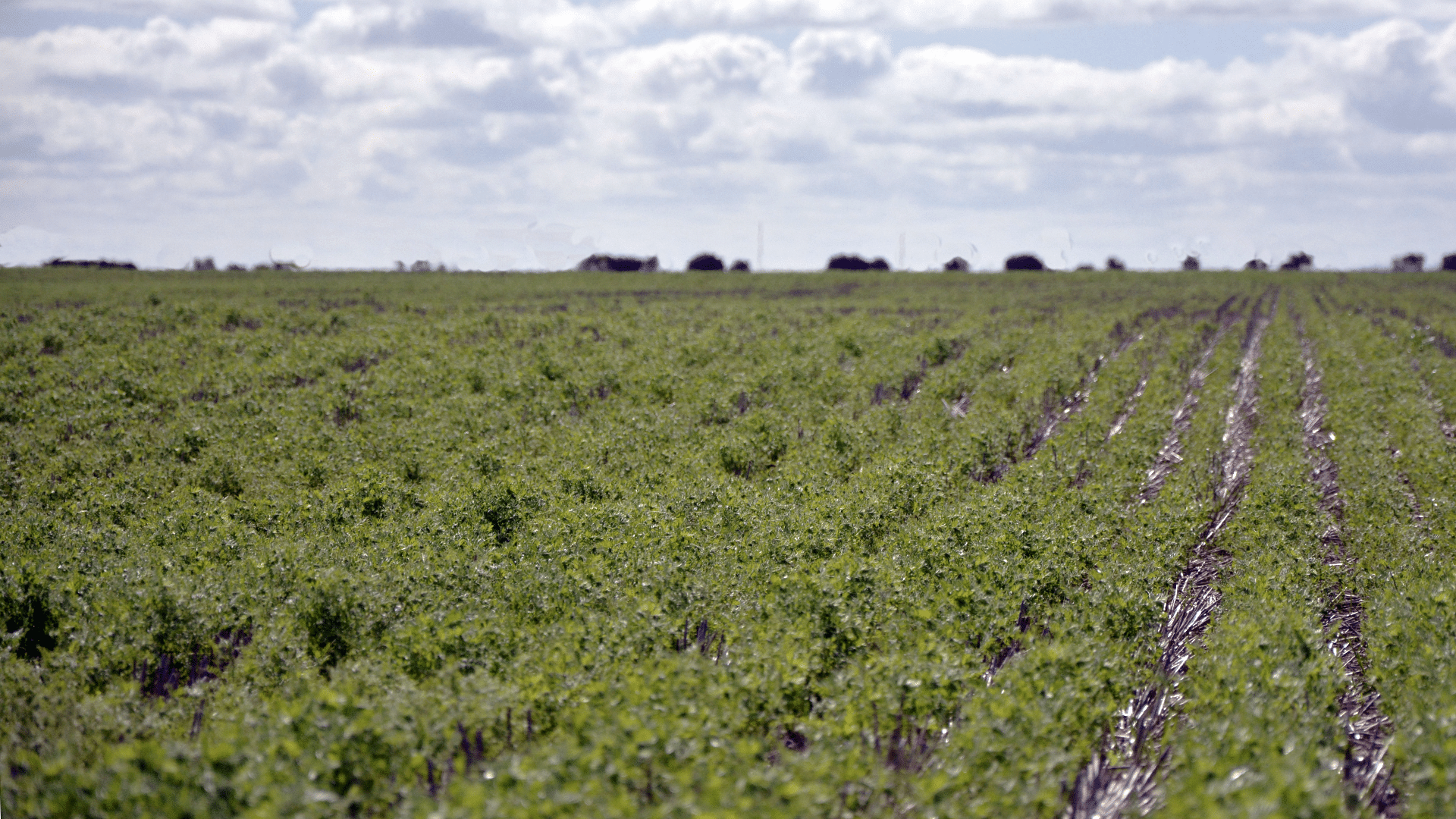START
FINISH

Summary
Growers in the lower rainfall areas of South Australia lack a consistent and reliable legume option for use in their rotation with options for profit making and nitrogen fixation to their soil. Promising lines from previous GRDC trials have been used in this three year trial across five sites in South Australia where one line, SA 34876 has been identified as having suitable good early vigour, frost tolerance, improved winter growth, high fodder yields and early maturity enabling it to produce seed in the majority of years. This line is now in the process of being commercialised for use.
Background
Feedback from farmers, agronomists and researchers identified a need for a reliable legume crop in the SA lower rainfall zones with good early vigour, frost tolerance, improved winter growth, high fodder yields and the ability to produce seed in the majority of years.
These traits were used as criteria for evaluating the germplasm previously bred, but not selected for release in Grains Research and Development Corporation (GRDC) vetch breeding projects.
Research Aims
The core objectives of the project were to:
• Provide a genuine reliable legume break crop option for cereal and mixed farmers in the marginal cropping areas of South Australia
• Release locally adapted varieties for use in these areas complete with agronomic packages
In The Field
Trials were conducted at Karoonda, Loxton, Morchard, Minnipa, Piednippie and Kingsford Farm (Roseworthy) across the three years, testing twenty lines of vetch selected from previous GRDC projects.
Observations were made on vigour, disease susceptibility, winter growth and frost tolerance in addition to measuring hay yields.
Trial work was repeated over several years to ensure accuracy. Simultaneous disease screening for these lines was conducted in field trials at Tamworth.
Results
This project clearly illustrated vetch could be a reliable legume option in the lower rainfall areas of South Australia. Line SA 34876 displayed ideal characteristics and the most potential for these areas.
It had the best cold/frost tolerance of all lines trialled, with the best early vigour and winter growth, enabling it to put on more bulk earlier in the season, producing fodder earlier to fill the feed gap that often occurs in these systems in August and September.
The line also displayed early maturity, with flowering around 90 days, suiting a sharp dry finish to which these areas can be prone.
Project Participants
South Australian Research and Development Institute: Stuart Nagel, Gregg Kirby and Rade Matic.
The Problem
Growers in the lower rainfall areas of South Australia lack a consistent and reliable legume option for use in their rotation with options for profit making.
The research
Using germplasm from previous GRDC vetch projects to develop and trial vetch lines with potential to be commercialised for use in low rainfall areas of SA.
More information
Stuart Nagel, SARDI
T: 0407 720 729
E: [email protected]
Value for Growers
From this project, line SA 34876 has been identified as an ideal candidate for release as a new vetch variety for lower rainfall cropping areas of South Australia. Preparation is now underway for commercialisation of this line with SAGIT, SARDI and the GRDC negotiating the terms of this process.
SA 34876 provides growers with a shorter season, early maturing vetch variety that has good yield potential for both grain and hay, which is rust resistant and distinct from existing varieties. As a part of this project, SAGIT’s support for the National Vetch breeding project, communication of the research and potential benefits of the project have been communicated on a regular basis.
A number of field day presentations were conducted, as were media interviews and papers detailing the project and its progress to provide growers and the wider industry with the most up to date information available.



